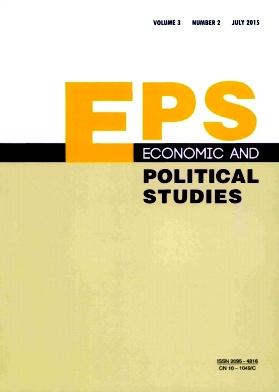Regional power system transitions towards carbon neutrality: The case of North China
IF 2
4区 社会学
Q2 SOCIAL SCIENCES, INTERDISCIPLINARY
引用次数: 4
Abstract
Abstract China has announced its goal of reaching carbon neutrality by 2060, which will have a profound impact on its energy and economic systems. During this process, the power sector will play a key role in helping the country on its road towards carbon neutrality. This study develops a multi-regional power dispatch and capacity expansion model to combine long-term capacity expansion with short-term power dispatch. The model is built to optimise the carbon-neutral transition pathway from the perspective of economics, focussing on power system stability and reliability under high penetrations of renewables. Using the case study of North China, the cost-effective methods for power system transitions under the targets of reaching peak emissions by 2030 and achieving carbon neutrality by 2060 are discussed under different scenarios. We find that the future power supply system will rely heavily on renewable energy which will account for more than 89% of power generation. Inner Mongolia will produce more than 84% of power in the North China region. The inter-regional power transmission capacity will be five times higher than its current level. Policy choices will lead to different transition pathways as the early-stage installation decisions will have a lock-in effect on the following carbon emission reduction strategies and determine the importance of technologies adopted in achieving carbon neutrality. Although the transition to a low-carbon economy will result in an increase in cost by 17–19%, it will bring huge climate benefits to the world.区域电力系统向碳中和过渡——以华北地区为例
中国宣布了到2060年实现碳中和的目标,这将对中国的能源和经济体系产生深远的影响。在此过程中,电力部门将在帮助该国走向碳中和的道路上发挥关键作用。本研究建立了一个多区域电力调度与扩容模型,将长期扩容与短期调度相结合。该模型从经济学角度对碳中和转型路径进行优化,重点关注可再生能源高渗透率下电力系统的稳定性和可靠性。以华北地区为例,探讨了在2030年达到排放峰值和2060年实现碳中和目标下,不同情景下电力系统转型的成本效益方法。我们发现,未来的电力供应系统将严重依赖可再生能源,可再生能源将占到发电量的89%以上。内蒙古将生产华北地区84%以上的电力。跨区域输电能力将达到目前水平的5倍。政策选择将导致不同的过渡路径,因为早期的安装决策将对后续的碳减排战略产生锁定效应,并决定实现碳中和所采用的技术的重要性。虽然向低碳经济转型将导致成本增加17-19%,但它将为世界带来巨大的气候效益。
本文章由计算机程序翻译,如有差异,请以英文原文为准。
求助全文
约1分钟内获得全文
求助全文
来源期刊

Economic and Political Studies-EPS
SOCIAL SCIENCES, INTERDISCIPLINARY-
CiteScore
5.60
自引率
4.20%
发文量
29
 求助内容:
求助内容: 应助结果提醒方式:
应助结果提醒方式:


